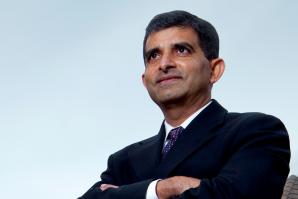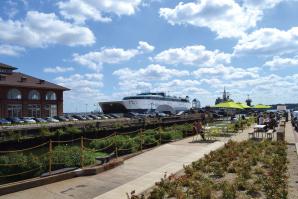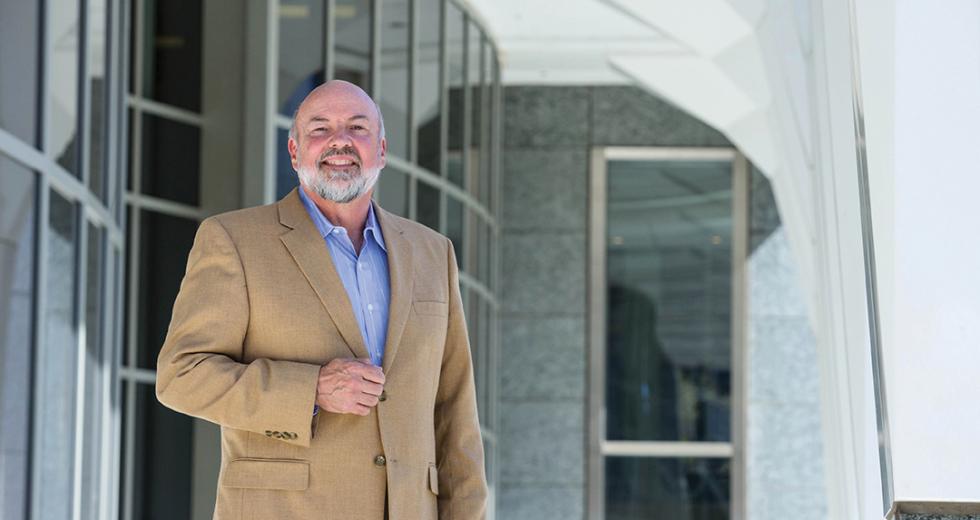On a warm day in late winter, a small crowd of business and political leaders gathered in Yuba City to cheer the groundbreaking of a new headquarters that symbolizes a quickening of the Central Valley’s economic pulse.
Sierra Central Credit Union has been holding onto that property for nearly a decade, waiting for the right time to bring together a handful of local offices. Because of the improving financial wellbeing of his customers, credit union CEO John Cassidy is convinced 2014 is the right year for the $13 million project. He says customers have been consolidating debt and limiting expenditures effectively, and the credit union’s leaders are also noticing other signs of a turnaround.
At the University of the Pacific Business Forecasting Center, Director Jeffrey Michael is witnessing economic improvements, too. The logistics sector has migrated almost entirely from the Bay Area to the Central Valley, and catalytic projects, like the Amazon fulfillment centers in Tracy and Patterson and the new state prison health care facility in Stockton, are important economic milestones.
Still, when it comes to overall economic health and vitality, the Central Valley is behind. Way behind. And that should concern us all because there are fundamental factors holding us back.
Our existing labor pool isn’t providing the skills and education being demanded by employers. Without a change of pace, it will only get worse in the decades ahead. In health care alone, Public Policy Institute of California projections indicate we’ll have 200,000 vacant positions in the Central Valley by 2025 because we are not producing enough high school, undergrad and graduate degree holders to meet demand. This shortfall in educational outcomes is so impactful that everyone, especially business people, will have to greatly increase investment in a range of initiatives that connect young people to jobs, as Comstock’s reported in February (“Linking Education to Industry,” by Allen Young).
But the truth is, the valley doesn’t have the money, political power or support from business to close the gap. After working six years in the Central Valley on growth issues, it’s my conclusion that we — north and south — don’t work together well enough to garner the federal and state resources the valley needs. We have a similar problem funding education.
The Bay Area, which Michael says is increasingly linked economically to our region, may have some leaders who conclude that a struggling valley will pull the entire state down. The next step is for the Bay Area and the Central Valley to come together politically to deliver much-needed resources. The Bay Area has a bigger stake in the valley’s success than it thinks. Many of its workers live here and more will in the future, especially as transportation links are improved.
Populations in the valley are growing faster than elsewhere in the state, and over the next 40 years California is going to grow faster than the rest of the country. Almost all of that growth is going to come from the Latino community, a group struggling with educational outcomes. If you enter an average kindergarten class in our region, you will find that more than half the kids are Latino. Meanwhile, baby boomers are exiting the workplace. We are in danger of replacing them with a smaller, less educated cohort at a time when higher skills and knowledge are vital.
Unless we find a way to foster better academic success for Latinos, we will continue to struggle economically. We don’t have a lot of time to make this right, maybe only ten years. If not, we’re in danger of being a drag on the state and nation’s economy for decades to come.
Recommended For You

New Angle Needed
Sacramento should try a new approach to economic development
Like many transplants to Sacramento, before moving to the area I had little awareness of the plethora of quality-of-life amenities the region has to offer. As I complete my first decade as a resident, it has dawned on me that this has been the longest stop thus far in my professional career.

Go Time
Hey Sacramento, let’s stop talking and get something done.
You may have recently noticed some random references to JFDI. Maybe it was in a tweet or a sticker on the back of a cell phone. The initials stand for Just F*cking Do It. It isn’t a new movement or an acronym from a New York Times Best Seller. It represents an attitude, a mindset and — most importantly — an unwavering willingness to act.



